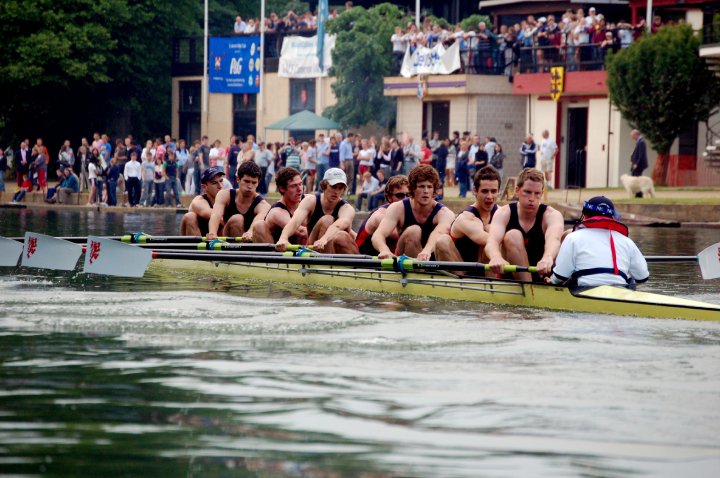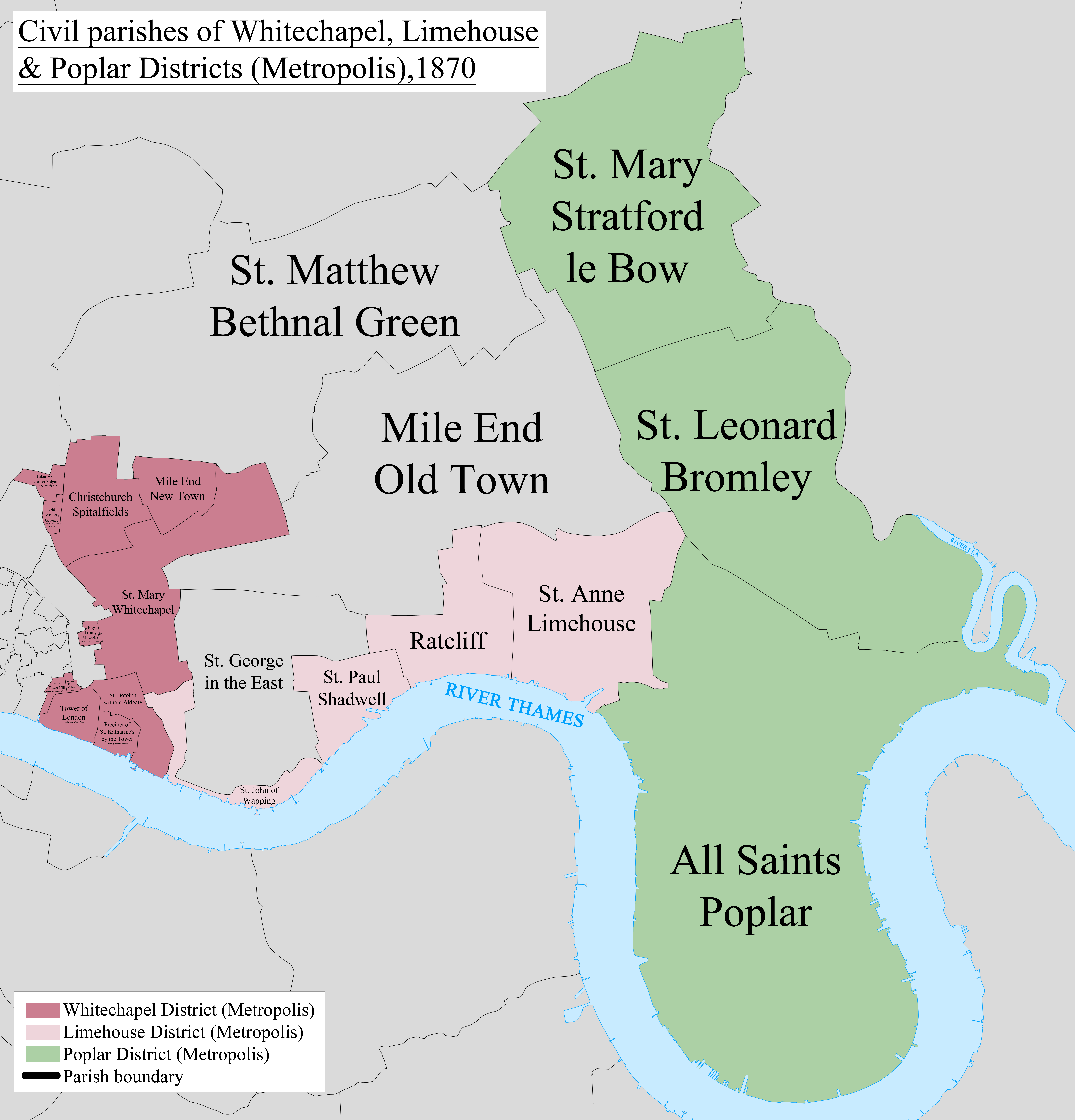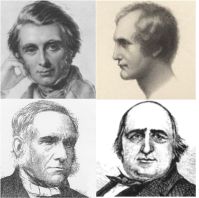|
Samuel Barnett (reformer)
Samuel Augustus Barnett (8 February 1844 – 17 June 1913) was a Church of England cleric and social reformer who was particularly associated with the establishment of the first university settlement, Toynbee Hall, in east London in 1884. He is often referred to as Canon Barnett, having served as Canon of Westminster Abbey from 1906 until his death. Early life Samuel Augustus Barnett was born in Bristol, the elder son of Francis Augustus Barnett, an iron manufacturer. After a private education by tutors he entered Wadham College, Oxford, in 1862, leaving in 1866, whereafter he visited the United States. In the following year he was ordained as a deacon and became the curate of St Mary's, Bryanston Square before being ordained as a priest in 1868. In 1873, he married Henrietta Octavia Weston Rowland (1851–1936), heiress, social reformer and author, later Dame Henrietta Barnett, DBE, who had been a co-worker of Octavia Hill. Both were social reformers and philanthropists wi ... [...More Info...] [...Related Items...] OR: [Wikipedia] [Google] [Baidu] |
The Reverend
The Reverend (abbreviated as The Revd, The Rev'd or The Rev) is an honorific style (form of address), style given to certain (primarily Western Christian, Western) Christian clergy and Christian minister, ministers. There are sometimes differences in the way the style is used in different countries and church traditions. ''The Reverend'' is correctly called a ''style'', but is sometimes referred to as a title, form of address, or title of respect. Etymology The term is an anglicisation of the Latin , the style originally used in Latin documents in medieval Europe. It is the gerundive or future passive participle of the verb ("to respect; to revere"), meaning "[one who is] to be revered/must be respected". ''The Reverend'' is therefore equivalent to ''the Honourable'' or ''the Venerable''. Originating as a general term of respectful address in the 15th century, it became particularly associated with clergy by the 17th century, with variations associated with certain ranks in th ... [...More Info...] [...Related Items...] OR: [Wikipedia] [Google] [Baidu] |
Manufacturer
Manufacturing is the creation or Production (economics), production of goods with the help of equipment, Work (human activity), labor, machines, tools, and chemical or biological processing or formulation. It is the essence of the secondary sector of the economy. The term may refer to a range of Human behavior, human activity, from handicraft to High tech manufacturing, high-tech, but it is most commonly applied to industrial design, in which raw materials from the primary sector of the economy, primary sector are transformed into finished goods on a large scale. Such goods may be sold to other manufacturers for the production of other more complex products (such as aircraft, Major appliance, household appliances, furniture, sports equipment or automobiles), or distributed via the tertiary industry to end users and consumers (usually through wholesalers, who in turn sell to retailers, who then sell them to individual customers). Manufacturing engineering is the field of engine ... [...More Info...] [...Related Items...] OR: [Wikipedia] [Google] [Baidu] |
Historian
A historian is a person who studies and writes about the past and is regarded as an authority on it. Historians are concerned with the continuous, methodical narrative and research of past events as relating to the human species; as well as the study of all history in time. Some historians are recognized by publications or training and experience.Herman, A. M. (1998). Occupational outlook handbook: 1998–99 edition. Indianapolis: JIST Works. Page 525. "Historian" became a professional occupation in the late nineteenth century as research universities were emerging in Germany and elsewhere. Objectivity Among historians Ancient historians In the 19th century, scholars used to study ancient Greek and Roman historians to see how generally reliable they were. In recent decades, however, scholars have focused more on the constructions, genres, and meanings that ancient historians sought to convey to their audiences. History is always written with contemporary concerns and ancient hist ... [...More Info...] [...Related Items...] OR: [Wikipedia] [Google] [Baidu] |
Balliol College, Oxford
Balliol College () is a constituent college of the University of Oxford. Founded in 1263 by nobleman John I de Balliol, it has a claim to be the oldest college in Oxford and the English-speaking world. With a governing body of a master and around 80 fellows, the college's main buildings are located on Broad Street with additional buildings to the east in Jowett Walk and Holywell Manor. As one of the larger colleges of Oxford University, Balliol typically has around 400 of both undergraduates and graduates. The college pioneered the Philosophy, politics and economics, PPE degree in the 1920s. Balliol has #People associated with Balliol, notable alumni from a wide range of disciplines. These include 13 Nobel Prize winners and four List of prime ministers of the United Kingdom by education, British prime ministers. History and governance Foundation and origins Balliol College was founded in about 1263 by John I de Balliol under the guidance of Walter of Kirkham, the Bishop of Du ... [...More Info...] [...Related Items...] OR: [Wikipedia] [Google] [Baidu] |
Toynbee Hall 1902
Toynbee is a surname. Notable people with the surname include: * Arnold Toynbee (1852–1883), British economic historian * Arnold Joseph Toynbee (1889–1975), British historian * Geoffrey Toynbee (1885–1914), English cricketer * Henry Toynbee (1819–1909), British merchant sailor and meteorologist * Jocelyn Toynbee (1897–1985), British archaeologist and art historian * Joseph Toynbee (1815–1866), British physician, pioneer of otolaryngology * Matthew Toynbee (born 1956), New Zealand cricketer * Paget Toynbee (1855–1932), British Dante scholar * Philip Toynbee (1916–1981), British writer * Polly Toynbee (born 1946), British journalist and writer See also * Toynbee Hall, a settlement in London inspired by and named in honour of Arnold Toynbee * ''The Toynbee Convector'', a time-travel story by Ray Bradbury, vaguely based on the philosophy of Arnold Joseph Toynbee * Toynbee's law of challenge and response, after Arnold J. Toynbee. * Toynbee tiles, mysterious tiles ... [...More Info...] [...Related Items...] OR: [Wikipedia] [Google] [Baidu] |
Charity Organization Society
The Charity Organisation Societies were founded in England in 1869 following the ' Goschen Minute' that sought to severely restrict outdoor relief distributed by the Poor Law Guardians along the lines of the Elberfeld system. In the early 1870s, a handful of local societies were formed with the intention of restricting the distribution of outdoor relief to the elderly. Also called the Associated Charities was a private charity that existed in the late 19th and early 20th centuries as a clearing house for information on the poor. The society was mainly concerned with distinction between the deserving poor and undeserving poor. The society believed that giving out charity without investigating the problems behind poverty created a class of citizens that would always be dependent on alms giving. The society originated in Elberfeld, Germany and spread to Buffalo, New York around 1877. The conviction that relief promoted dependency was the basis for forming the Societies. Inste ... [...More Info...] [...Related Items...] OR: [Wikipedia] [Google] [Baidu] |
Outdoor Relief
Outdoor relief, an obsolete term originating with the Elizabethan Poor Law (1601), was a programme of social welfare and poor relief. Assistance was given in the form of money, food, clothing or goods to alleviate poverty without the requirement that the recipient enter an institution. In contrast, recipients of indoor relief were required to enter an almshouse, orphanage, workhouse or poorhouse. Outdoor relief consisted of hot meals and provision of blankets and things necessary for homeless persons. Outdoor relief was also a feature of the Scottish Poor Laws and the Irish Poor Laws. ''Oxford Reference'' (Accessed 18 July 2020) References Scottish Poor Laws[...More Info...] [...Related Items...] OR: [Wikipedia] [Google] [Baidu] |
Parish
A parish is a territorial entity in many Christianity, Christian denominations, constituting a division within a diocese. A parish is under the pastoral care and clerical jurisdiction of a priest#Christianity, priest, often termed a parish priest, who might be assisted by one or more curates, and who operates from a parish church. Historically, a parish often covered the same geographical area as a Manorialism, manor. Its association with the parish church remains paramount. By extension the term ''parish'' refers not only to the territorial entity but to the people of its community or congregation as well as to church property within it. In England this church property was technically in ownership of the parish priest ''Ex officio member, ex officio'', vested in him on his institution to that parish. Etymology and use First attested in English in the late 13th century, the word ''parish'' comes from the Old French , in turn from , the Romanization of Greek, Romanisation of ... [...More Info...] [...Related Items...] OR: [Wikipedia] [Google] [Baidu] |
Whitechapel
Whitechapel () is an area in London, England, and is located in the London Borough of Tower Hamlets. It is in east London and part of the East End of London, East End. It is the location of Tower Hamlets Town Hall and therefore the borough town centre. Whitechapel is located east of Charing Cross. The district is primarily built around Whitechapel High Street and Whitechapel Road, which extend from the City of London boundary to just east of Whitechapel station. These two streets together form a section of the originally Roman Road from the Aldgate to Colchester, a route that later became known as the ''Great Essex Road''. Population growth resulting from ribbon development along this route, led to the creation of the parish of Whitechapel, a daughter parish of Stepney#Manor and Ancient Parish, Stepney, from which it was separated, in the 14th century. Whitechapel has a long history of having a high proportion of immigrants within the community. From the late 19th century unt ... [...More Info...] [...Related Items...] OR: [Wikipedia] [Google] [Baidu] |
Philanthropist
Philanthropy is a form of altruism that consists of "private initiatives for the public good, focusing on quality of life". Philanthropy contrasts with business initiatives, which are private initiatives for private good, focusing on material gain; and with government endeavors that are public initiatives for public good, such as those that focus on the provision of public services. A person who practices philanthropy is a philanthropist. Etymology The word ''philanthropy'' comes , from 'to love, be fond of' and 'humankind, mankind'. In , Plutarch used the Greek concept of to describe superior human beings. During the Middle Ages, was superseded in Europe by the Christian virtue of '' charity'' (Latin: ) in the sense of selfless love, valued for salvation and escape from purgatory. Thomas Aquinas held that "the habit of charity extends not only to the love of God, but also to the love of our neighbor". Sir Francis Bacon considered ''philanthrôpía'' to be synonymous ... [...More Info...] [...Related Items...] OR: [Wikipedia] [Google] [Baidu] |
Octavia Hill
Octavia Hill (3December 183813August 1912) was an English Reform movement, social reformer and founder of the National Trust. Her main concern was the welfare of the inhabitants of cities, especially London, in the second half of the nineteenth century. Born into a family of radical thinkers and reformers with a strong commitment to alleviating poverty, she herself grew up in straitened circumstances owing to the financial failure of her father's businesses. Home educated by her mother, she worked from the age of 14 for the welfare of working people. Hill was a moving force behind the development of social housing, and her early friendship with John Ruskin enabled her to put her theories into practice with the aid of his initial investment. She believed in self-reliance, and made it a key part of her housing system that she and her assistants knew their tenants personally and encouraged them to better themselves. She was opposed to municipal provision of housing, believing it t ... [...More Info...] [...Related Items...] OR: [Wikipedia] [Google] [Baidu] |
St Mary's, Bryanston Square
St Mary's, Bryanston Square, is a Church of England church dedicated to the Virgin Mary on Wyndham Place, Bryanston Square, London. A related Church of England primary school which was founded next to it bears the same name. History St Mary's, Bryanston Square was built as one of the Commissioners' churches in 1823–1824 and was designed by Robert Smirke (architect), Robert Smirke to seal the vista from the lower end of Bryanston Square. It is a brick building, with a rounded stone portico, round tower and small dome, topped by cross. It is listed building, listed in the top protective and recognition category, grade I. The church cost £19,955 (), towards which the Church Building Commission gave a grant of £14,955. The northern side faces onto York Street, Marylebone, York Street. Charles John Gardiner, 1st Earl of Blessington, and Marguerite, Countess of Blessington, Margaret Farmer were married in the church. Thomas Frognall Dibdin (1823 – 1847) was a Rector ( ... [...More Info...] [...Related Items...] OR: [Wikipedia] [Google] [Baidu] |







